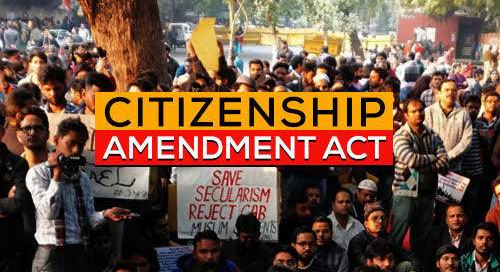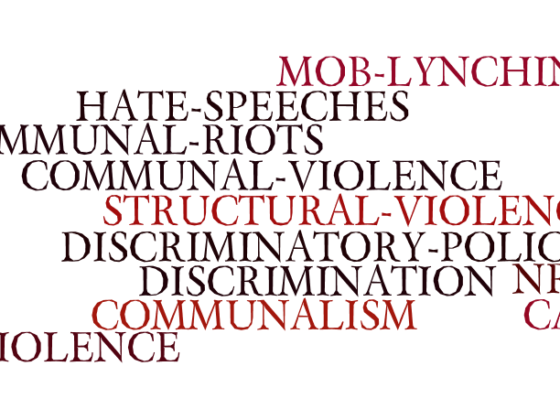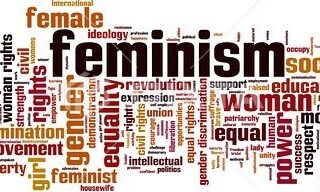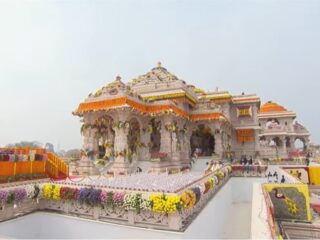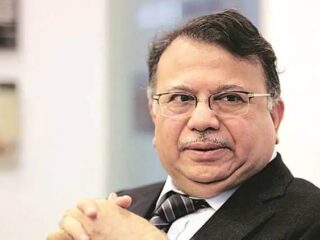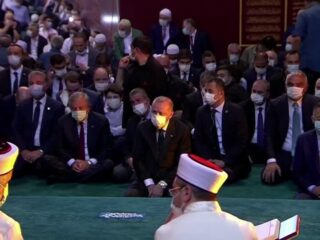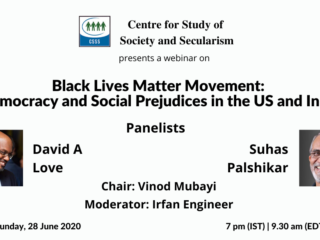The year 2019 ended with lots of hope. For nearly month long, the streets in several cities, towns and rural areas in the country were full of people protesting against the Citizenship Amendment Act, 2019 (CAA) passed in the month of December. The protests first started in Assam with All Assam Students Union leading it. They then spread to Jamia Millia Islamia and Aligarh Muslim University. Students from several other universities and institutions came on street to protest the law, including Mumbai University, TISS and IIT. The protesters assembled with copies of the Preamble of the Constitution and Indian Flag. The Prime Minister had to acknowledge that the students were against discrimination between citizens. The students were also supported by the liberal intellectuals; human rights activists; people who value democracy and liberty, including Bollywood artists, singers, painters, creative artists and citizens who hated having to prove their identity and citizenship all the time.
The protesters were defending the Constitution and its values viz. liberty, equality and fraternity. The CAA, they strongly felt, would discriminate against the Muslim citizens as during the compilation of National Register of Citizens (NRC), Muslims would have to prove their citizenship by producing myriad documents that certified their place and date of birth, which itself is challenging given the poor infrastructure to record births and deaths in India, and perhaps, also that of their parents and grandparents. Citizens belonging to other communities would get into the NRC even without the documents facilitated by the CAA. However, not only Muslims, but the undocumented poor, people from rural areas, homeless and landless, members of nomadic communities, all would find it challenging to prove their citizenship.
The CAA proved to be the last straw on the camel’s back for these protesters. They were protesting against the arbitrariness with which the rulers of the country were exercising their power forgetting all the promises of development and achhe din (happy days), without public debates and without consulting the stake holders. One fine day demonetization, one fine day GST implemented after a midnight session of the Parliament, one fine day Article 370 abrogated, legislation criminalising triple talaq road rolled. Several Ministers and prominent leaders of the ruling party arrogantly ordered citizens who questioned the policy of the Govt. to go and settle in Pakistan. Those who did not agree with the Govt. policies were stigmatized as anti-nationals, anti-Hindu, sickular, presstitude, urban naxals, tukde tukde gang, Khan Market gang, etc. and came down on them heavily with the entire might of the state. Among those so stigmatized and labelled also included leaders of opposition parties. In addition to the state, trolls and foot loose cadres of the ruling party were unleashed on them. This heavily damaged several institutions that are vital for democracy, including a section of the media and educational institutions.
The authoritarian state which was bull-dozing all opponents relied heavily on the political ideology of Hindu nationalism and populist measures. The best way of survival for the ruling party in spite of steep economic slowdown, growing joblessness and inflation was to instil pride and feeling of superiority into the hearts and minds of the members of the majority community about their religion and culture. Exclusivist symbols were deployed, like chanting ‘Bharatmata ki jai’, worship of gomata etc. These symbols were pressed into service to forge unity, instil feeling of superiority and pride among the Hindus despite the caste based hierarchy. Thanks to the constant polarizing discourse and Hinduisation of national symbols, other communities like Muslims and Christians felt threatened and under siege.
This stoked a strong urge for unity among the excluded communities which are otherwise culturally diverse. There is immense cultural diversity between a Tamil Muslim, Kannad Muslim, Malayali Muslim, Marathi Muslim, Gujarati Muslim, Manipuri Muslim, Bengali Muslim and Muslims from North India. Within each community there is further social stratification akin to caste hierarchies among Hindus. Then there are sectarian divisions – Shia-Sunni; Barelvi-Deobandi; Hanafi-Shafi and Ahle-Hadith etc. There is similar diversity within the Christian community as well. Strengthening of Hindu supremacists triggered off the urge among the Muslims to unite as well even though one after the other their sacred cultural symbols were crumbling – their family laws viz. Sharia, Babri Masjid, their institutions like Aligarh Muslim University and Jamial Millia Islamia as their minority character was questioned and the campuses trampled upon by the security agencies. Madrasas in UP are not only required to celebrate Republic Day and Independence Day but also prove the same by video recording the celebrations. Members of Muslim community are also made victims of lynch mobs often patronized by the state and during communal incidences. In Gurgaon and NOIDA their namaz in public spaces was forcibly stopped.
This cultural exclusion has strengthened the urge for unity among the Muslims. This unity is being constructed on exclusivist and conservative Islam. The defence of triple talaq by a section of religious leadership should be seen in this light – a political goal cloaked as religion. The community members are being told that their plight is because they failed to adhere to true Islam and embraced un-Islamic culture of ‘others’. Uniformity in the practice of Islam is promoted and cultural diversity, shared culture with other fellow Indians is being undermined. This process is strengthening political forces that mobilize the community around Islamic exclusivism. Like the Hindu supremacists, Islamic exclusivist like Asaduddin Owaisi and AIMIM thrive on aggressive and polarizing language posing to be strong enough to take on the ‘other’ and defend their religion.
The CAA protests are changing the face of this religion based communal binaries. A large section of the protesters are drawn from the Muslim community with Indian Tri-colour in one hand and Constitution in the other hand. Swearing by the Constitution should mean much more than just physically holding it. It means subscribing to the values of equality of all, including women of the community, respecting dignity of all, including women, respecting the cultural diversity of the country. The community will have to turn away from polarizing and exclusivist leadership within the community that make a mockery of Islam by supporting and justifying triple talaq and other such practices in the name of Islam, turn to humanity that is present within all the communities. The community should introspect, reform their social practices in accordance with the principles and values of the Constitution. These values are universal and not contrary to Islamic values. The long protest sit-in by the women in Shaheen Baug for 13 days in biting cold gives us new hope to retrieve the idea of plural India.


